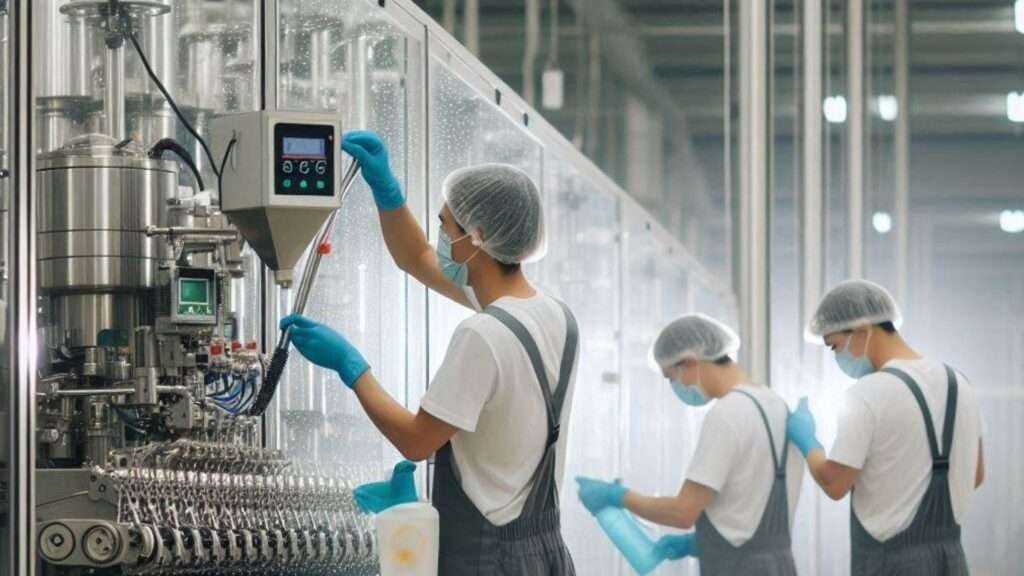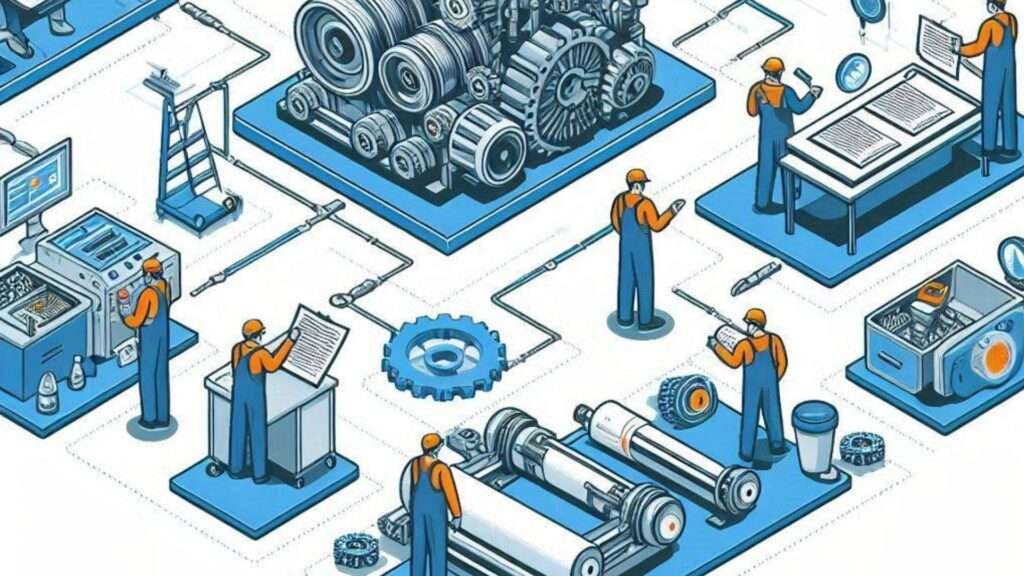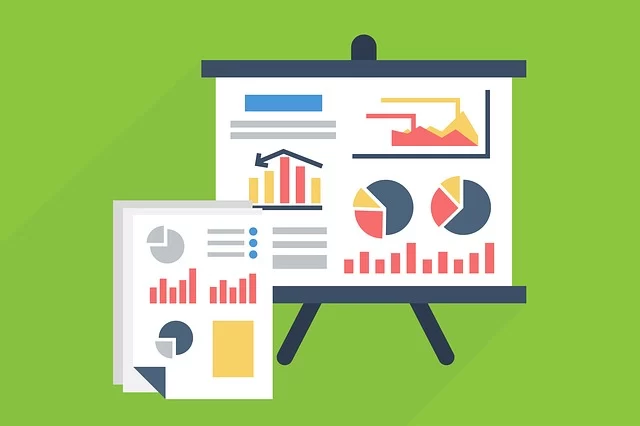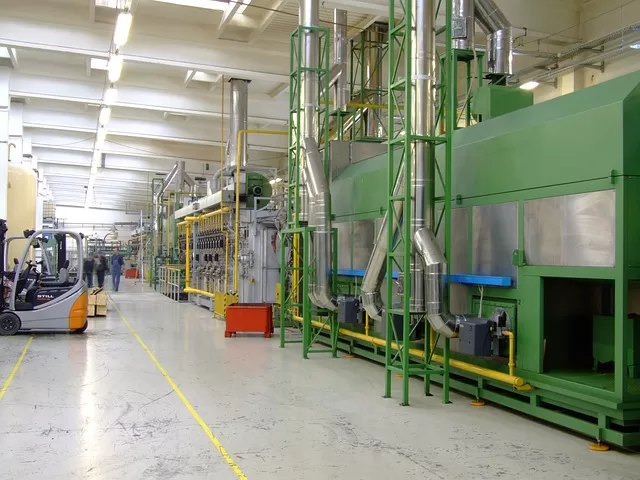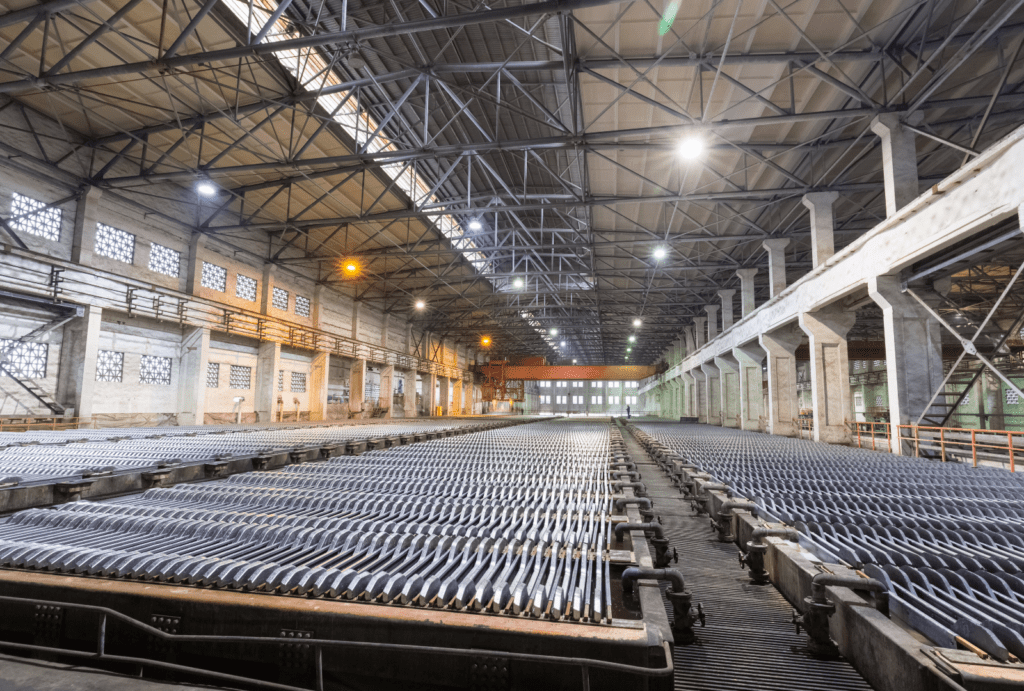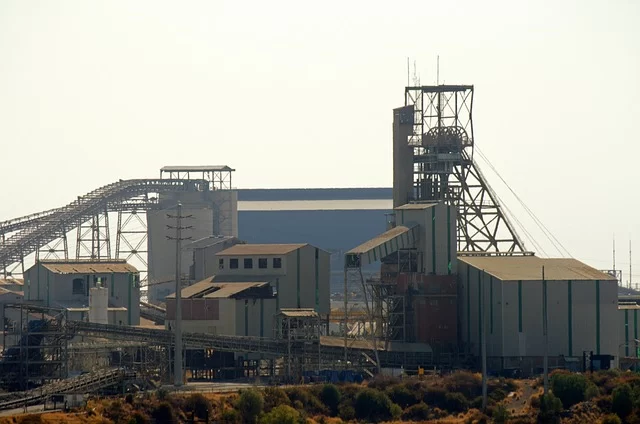The Essential Basics of Equipment Maintenance: Clean, Inspect, Measure & Adjust.
Equipment maintenance is a critical aspect of ensuring the
longevity and optimal performance of assets across various industries.
When performed efficiently, the right type of maintenance at
the right frequency and intensity can significantly extend the lifespan of
machinery, reduce downtime, and minimize operational costs.
Companies that prioritize quality maintenance are setting
themselves up for substantial improvements in equipment reliability, operational
efficiency, and overall cost savings while preserving the functionality and
reliability of equipment throughout its intended life cycle.
Table Of
Contents:
1.0
Cleaning for Longevity and Efficiency.
1.1
Importance of Systematic Cleaning Protocols.
1.2
Cleaning Methods and Technologies.
1.3
Industry-Specific Cleaning Considerations.
1.4
Environmental and Safety Considerations.
1.5
Cleaning Documentation and Quality Control.
1.6
Technological Advancements in Cleaning Management.
2.0
Conducting Thorough Inspections.
3.0
Measurement Practices for Maintenance.
4.0
Adjustments for Optimal Performance.
5.0
Establishing Standards for Maintenance Activities.
6.0
Maintenance Best Practices and Strategies.
7.0 Leveraging
Software for Maintenance Strategy Development.
8.0
Conclusion.
Understanding The Fundamentals of Quality Equipment Maintenance.
At the heart of any quality maintenance program is a
systematic approach grounded on four key actions:
1.
Clean.
2.
Inspect.
3.
Measure.
4.
Adjust.
These four pivotal activities form the cornerstone of
proactive maintenance as follows:
1.
Cleaning:
Removing debris, contaminants, and residues that could impair equipment
function.
2.
Inspection:
Detecting signs of wear, damage, or misalignment that could lead to future
failures.
3.
Measurement: Precise
gauging of parts to ensure they remain within operational tolerances.
4.
Adjustment:
Fine-tuning components to restore optimal setup and performance.
By mastering these fundamental steps, maintenance teams can
not only support immediate operational efficiency but also nurture long-term
benefits.
This approach mitigates the risks of unexpected breakdowns,
ensures consistently high productivity levels, and prevents minor issues from
escalating into major, costly problems.
This article is designed for maintenance and operations
personnel, and decision-makers responsible for equipment reliability and
performance.
We will be delving into each aspect of the ‘clean, inspect,
measure, adjust’ methodology, explore best practices and strategies, and
discuss how leveraging modern technologies and software solutions can elevate
your maintenance program to new heights of effectiveness.
As we navigate through the essential basics of equipment
maintenance, we will provide practical insights and actionable strategies that
you can implement to safeguard your investments, enhance operational
efficiency, and foster a culture of proactive maintenance within your organization.
Whether you’re looking to refine existing practices or build a
robust maintenance program from the ground up, this article offers valuable
insights to help you achieve your goals.
1.0 Cleaning
for Longevity and Efficiency.
Regular and thorough cleaning is a fundamental aspect of
effective equipment maintenance, critical for both longevity and optimal
performance.
In industrial environments, maintaining a clean operating
environment is not merely a matter of aesthetics but of operational efficiency,
safety, and regulatory compliance.
Clean equipment can operate more efficiently, consume less
energy, and is typically less prone to unexpected failures, ultimately
extending the lifespan of machinery and reducing downtime.
1.1 Importance
of Systematic Cleaning Protocols.
Implementing a systematic cleaning protocol is essential for
maintaining equipment integrity.
This process begins with establishing a clear schedule
tailored to the specific equipment and its operating conditions.
Cleaning tasks should be delineated into daily, weekly,
monthly, and even annual activities, focusing on areas prone to dirt buildup
and potential contamination.
1.
Daily
Cleaning: This typically involves basic wipe-downs of
exposed surfaces, removal of visible debris, and checking air filters. For food
processing equipment, daily sanitization is often mandatory.
2.
Weekly
Cleaning: More thorough cleaning of equipment exteriors,
clearing of vents and air intakes, and cleaning of less accessible areas.
3.
Monthly
Cleaning: Deep cleaning of internal components,
lubrication points, and hard-to-reach areas. This might involve partial
disassembly of equipment.
4.
Annual
Cleaning: Comprehensive cleaning of all equipment parts,
often coinciding with major maintenance activities or shutdowns.
1.2 Cleaning
Methods and Technologies.
Different types of equipment require distinct cleaning
methods. The choice of method depends on the nature of the contaminants, the
sensitivity of the equipment, and the industry standards. Some common cleaning
methods include:
1.
Dry
Cleaning Methods:
a.
Compressed Air: Effective for removing dust and
loose debris from intricate parts without causing damage. Suitable for
electronics and sensitive machinery.
b.
Vacuum Cleaning: Useful for removing dry
particulates and debris, especially in areas where water or liquid cleaning
agents are not suitable.
c.
Brushing and Scraping: Manual methods for removing
stubborn deposits or built-up residues.
2.
Wet
Cleaning Methods:
a.
Power Washing: High-pressure water cleaning,
effective for heavy-duty machinery and large surfaces.
b.
Steam Cleaning: Uses high-temperature steam to
clean and sanitize surfaces, particularly useful in food processing and
pharmaceutical industries.
c.
Solvent Cleaning: Employs specialized solvents to
dissolve grease, oil, and other stubborn contaminants. Care must be taken to
use solvents compatible with equipment materials.
3.
Advanced
Cleaning Technologies:
a.
Ultrasonic Cleaning: Uses high-frequency sound
waves to create microscopic bubbles in a cleaning solution, effectively
removing contaminants from complex parts.
b.
Dry Ice Blasting: Utilizes pressurized carbon
dioxide pellets to clean surfaces without leaving residue or secondary waste.
4.
Laser
Cleaning: Employs laser technology to remove contaminants
without damaging the underlying surface, particularly useful for precision
cleaning of sensitive components.
1.3 Industry-Specific
Cleaning Considerations.
Different industries have unique cleaning requirements based
on their operational environment and regulatory standards:
1.
Food
and Beverage Industry:
a.
Adheres to strict cleanliness standards to prevent
contamination.
b.
Requires daily sanitization using food-grade
cleaning agents.
c.
Often employs Clean-in-Place (CIP) systems for
internal cleaning of pipes and vessels.
d.
Implements hot water sterilization methods.
2.
Pharmaceutical
Industry:
a.
Follows Good Manufacturing Practice (GMP)
guidelines.
b.
Requires validated cleaning procedures and
documentation.
c.
Often uses sterile cleaning techniques and
specialized cleaning rooms.
3.
Heavy
Manufacturing:
a.
Focuses on removing oil, grease, and metal
shavings.
b.
May require heavy-duty degreasers and
industrial-strength cleaning agents.
c.
Often involves cleaning large-scale equipment and
production lines.
4.
Electronics
Manufacturing:
a.
Emphasizes dust-free environments and
electrostatic discharge (ESD) prevention.
b.
Utilizes specialized cleaning agents that don’t
leave residues.
c.
May employ clean-room technologies for sensitive
components.
1.4 Environmental
and Safety Considerations.
When implementing cleaning protocols, it’s crucial to consider
environmental impact and worker safety:
1.
Use
of Eco-Friendly Cleaning Agents: Opt for biodegradable and
non-toxic cleaning solutions where possible to minimize environmental impact.
2.
Proper
Disposal of Cleaning Waste: Implement systems for the safe
collection and disposal of cleaning waste, especially when dealing with
hazardous materials.
3.
Personal
Protective Equipment (PPE): Ensure workers are equipped
with appropriate PPE such as gloves, goggles, and respiratory protection when
handling cleaning chemicals.
4.
Ventilation:
Maintain adequate ventilation during cleaning processes, especially when using
solvents or generating dust.
5.
Training: Provide
comprehensive training to cleaning staff on proper techniques, chemical
handling, and safety procedures.
1.5 Cleaning
Documentation and Quality Control.
Maintaining detailed records of cleaning activities is
essential for ensuring consistency and demonstrating compliance:
1.
Cleaning
Logs: Keep detailed logs of all cleaning activities, including
date, time, personnel involved, and methods used.
2.
Standard
Operating Procedures (SOPs): Develop and regularly update
SOPs for each type of equipment and cleaning process.
3.
Quality
Checks: Implement a system of quality checks and inspections to
ensure cleaning standards are consistently met.
4.
Continuous
Improvement: Regularly review and update cleaning protocols
based on equipment performance data and emerging best practices.
1.6 Technological
Advancements in Cleaning Management.
The integration of technology in cleaning management is
revolutionizing how industries approach this critical task:
1.
IoT-Enabled
Cleaning Systems: Smart sensors can detect when equipment requires
cleaning, optimizing cleaning schedules.
2.
Automated
Cleaning Systems: Robotic cleaning systems are being developed for
various industries, increasing efficiency and consistency.
3.
Data
Analytics: Use of data analytics to track cleaning
effectiveness and optimize protocols over time.
4.
Augmented
Reality (AR): AR systems can guide maintenance staff through
complex cleaning procedures, ensuring accuracy and completeness.
Effective cleaning is a cornerstone of equipment maintenance,
directly impacting operational efficiency, product quality, and equipment
longevity.
By implementing comprehensive cleaning protocols tailored to
specific industry needs and leveraging advanced cleaning technologies,
organizations can significantly enhance their equipment performance and
lifespan.
Regular, thorough cleaning not only ensures optimal operation
but also contributes to a safer workplace, reduced environmental impact, and
improved overall productivity.
As cleaning technologies and methodologies continue to evolve,
staying informed and adaptable will be key to maintaining a competitive edge in
equipment maintenance and operational excellence.
2.0 Conducting
Thorough Inspections.
Consistent equipment inspections play a crucial role in
preventing potential breakdowns and ensuring the longevity of machinery.
By systematically examining equipment, operators can identify
wear and tear, mechanical issues, and potential hazards before they escalate
into significant problems.
Inspections can be categorized into two main types:
non-intrusive and intrusive techniques:
1.
Non-intrusive
inspection methods involve techniques that do not require disassembling
equipment.
a.
Common practices include visual inspections, which
allow operators to identify visible signs of damage, and sensory checks, where
the equipment’s sound, vibration, and temperature changes are monitored.
b.
Additionally, infrared thermography and ultrasonic
testing can detect underlying issues without direct contact.
2.
Intrusive
inspection techniques, on the other hand, involve a more hands-on
approach.
a.
These methods might require partial or full
disassembly to assess the condition of internal components.
b.
For instance, lubricating systems, filters, and
internal gears often need to be inspected directly to ensure there are no
hidden defects or blockages.
To ensure thorough and consistent inspections, the creation
and use of an inspection checklist is essential.
A well-structured checklist guides operators through each
step, ensuring that no part of the equipment is overlooked.
These checklists can be tailored to the specific machinery and
should be regularly updated based on past inspections and manufacturer
recommendations.
Various tools aid in the inspection process, ranging from
simple handheld devices like flashlights and magnifying glasses to more
advanced diagnostic tools such as borescopes and vibration analyzers.
Employing the right tools enhances the effectiveness of the
inspections.
Advanced
Technologies for Underwater Inspections: Remotely Operated Vehicles
(ROVs) are commonly used for inspecting underwater structures.
These underwater drones are equipped with specialized cameras
and sensors to perform detailed inspections. Key features include
high-resolution cameras, sonar imaging, infrared thermography, ultrasonic
testing, gripping claws, real-time monitoring, and advanced navigation.
These features make ROVs an invaluable tool for underwater
inspections, reducing the need for human divers and enhancing safety and
efficiency.
Routine inspection procedures generally follow a set sequence:
the equipment is first powered down and cleaned, followed by a comprehensive
visual check.
Intrusive techniques are then applied as necessary. Finally,
the equipment is run under controlled conditions to ensure that all components
operate correctly post-inspection.
3.0 Measurement
Practices for Maintenance.
Measurement plays a pivotal role in the sphere of equipment
maintenance, serving as the backbone for effective upkeep and longevity of
machinery.
Regular measurement of various aspects of machinery, such as
wear and performance metrics, is integral to ensure optimal functionality and
preempt potential issues.
By consistently measuring indicators like temperature,
pressure, vibration, and other performance-related metrics, operators and
maintainers can draw meaningful insights on the machine’s health and operating
condition.
Wear is an inevitable aspect of equipment usage, and
monitoring it can prevent catastrophic failures.
Tools such as micrometers, calipers, and depth gauges are
traditionally employed to measure component dimensions and detect wear.
In terms of performance metrics, advanced technologies like
thermal imaging cameras and vibration analyzers have found widespread
application.
These devices offer non-contact and real-time measurement
capabilities, providing precise data that are crucial for maintenance
decision-making.
Infrared thermography, for instance, allows for the detection
of overheating components which could signal underlying issues.
The adoption of digital tools and Industry 4.0 technologies
has further augmented measurement practices in maintenance.
Devices equipped with sensors and other interconnected devices
facilitate continuous monitoring and remote measurement, offering a
sophisticated means to assess current status whilst predicting future failures.
For example, smart sensors can provide data on machine
vibrations, helping to pinpoint imbalances or misalignments in real-time, which
are precursors to mechanical failures.
Operators use these precise measurements to establish a
detailed understanding of the equipment’s current status.
By analyzing trends in measurement data, they can predict
potential failures and plan proactive maintenance activities.
Maintenance teams can develop a comprehensive maintenance
schedule, effectively managing resources and minimizing downtime.
Ultimately, employing rigorous measurement practices leads to
more informed decisions, extending the lifespan of equipment, and ensuring safe
and reliable operations.
4.0 Adjustments
for Optimal Performance.
Maintaining equipment at peak performance levels necessitates
regular adjustments based on inspection and measurement results.
These adjustments are crucial for preventing potential
problems and enhancing the efficiency of machinery.
For instance, alignment adjustments are fundamental in
reducing machinery wear and tear.
Misalignment issues can cause excessive vibration and noise,
leading to premature failure of components.
By correcting alignment, one can ensure smoother operation,
reduce energy consumption, and extend the lifespan of the equipment.
Another essential adjustment is tensioning, particularly for
belt-driven systems. Proper tensioning is critical as it directly impacts the
transmission of power from the motor to the machinery.
If belts are too tight, they can cause bearings to wear out
prematurely; if too loose, they may slip, leading to inefficient operation and
potential damage. Regularly checking and adjusting belt tension is therefore
vital to maintaining optimal performance.
Calibration adjustments also play a pivotal role in ensuring
equipment accuracy and efficiency.
Over time, instruments and machines can drift from their
specified performance parameters, leading to inaccurate outputs.
Regular calibration of measuring instruments, sensors, and
other critical components ensures that the equipment consistently operates
within desired tolerances. This not only enhances product quality but also
minimizes waste and operational costs.
In addition, maintaining appropriate clearance and lubrication
levels are adjustments that significantly impact equipment performance.
Proper lubrication prevents friction and wear, while correct
clearance settings ensure that components interact smoothly without causing
undue stress. Adjusting these parameters based on periodic inspections ensures
that machinery continues to function effectively and efficiently.
Incorporating these adjustments into a regular maintenance
schedule can sustain equipment performance, extend its operational life, and
reduce the likelihood of unexpected breakdowns.
As a result, not only do these adjustments prevent issues but
they also contribute to the overall productivity and equipment operational
efficiency.
5.0 Establishing
Standards for Maintenance Activities.
When it comes to quality equipment maintenance, setting and
adhering to well-defined standards is crucial for ensuring operational
effectiveness.
These standards form the backbone of maintenance activities,
including cleaning, inspections, measurements, and adjustments, thereby
ensuring consistency and promoting continuous improvement.
By establishing clear guidelines, organizations can optimize
their equipment performance and extend the lifespan of their assets.
Firstly, having standardized procedures for cleaning can
ensure that all equipment is maintained at a level that prevents contamination,
corrosion, and wear.
This involves specifying the appropriate cleaning agents,
methods, and frequencies to be used for different types of equipment.
Adherence to these standards mitigates the risks of
malfunction and enhances operational efficiency.
Secondly, standards for inspections play a pivotal role in
identifying potential issues before they escalate.
Regular, comprehensive checks should be carried out using
checklists developed for specific equipment types.
These checklists should include details on what to inspect,
acceptable condition limits, and criteria for passing or flagging issues.
The consistent application of these inspection standards
allows for early detection and resolution of problems, reducing downtime and
repair costs.
Furthermore, measurement standards are essential for
maintaining equipment accuracy and performance. This involves calibration
protocols, permissible deviation levels, and consistent documentation
practices.
Accurate measurements ensure that equipment operates within
specified parameters, thereby maintaining product quality and adherence to
regulatory requirements.
Lastly, adjustment standards are necessary to fine-tune
equipment performance.
These involve detailing procedures for aligning, tuning, and
configuring equipment settings based on performance data and operational needs.
Establishing these standards ensures that adjustments are
performed uniformly and effectively across all maintenance activities.
Implementing these standards involves thorough training for
maintenance personnel, regular review and updates of the standards, and a
feedback loop for continuous improvement.
By developing and adhering to comprehensive maintenance
standards, organizations can achieve higher reliability, efficiency, and
longevity of their equipment.
6.0 Maintenance
Best Practices and Strategies.
Effective maintenance management is critical to ensure the
longevity and optimal performance of equipment.
Central to this endeavor are key maintenance strategies,
notably preventive, predictive, and condition-based maintenance.
Each strategy offers unique advantages and, when integrated
properly, forms a comprehensive maintenance framework.
Preventive maintenance involves routine inspections and
servicing to avert potential failures. Scheduled at regular intervals, this
approach minimizes equipment downtime by addressing issues before they
escalate.
Crucial activities include lubrication, cleaning, and
adjustments. This proactive strategy aligns seamlessly with the ‘clean,
inspect, measure, adjust’ methodology, underpinning regular maintenance tasks
with systematic procedures.
Predictive maintenance, on the other hand, leverages data
analytics and sophisticated monitoring techniques to forecast equipment
failures.
By using sensors and advanced monitoring technologies, this
strategy monitors real-time performance metrics, identifying deviations from
norms that may indicate impending issues.
This forward-looking approach not only enhances the accuracy
of maintenance activities but also optimizes resource allocation by precisely
determining maintenance needs.
Condition-based maintenance (CBM) bridges preventive and
predictive strategies, focusing on the actual condition of equipment.
It relies on diagnostic
tools and sensors to gauge wear and tear, performing maintenance actions only
when necessary.
By constantly monitoring equipment health, CBM reduces
unnecessary maintenance activities, conserving both time and costs.
Implementing these best practices requires a thorough
understanding of the equipment and a strategic maintenance plan.
Initial steps include conducting a thorough inventory of all
equipment and analyzing individual maintenance requirements.
Integrating ‘clean, inspect, measure, adjust’ into each
maintenance type fosters a holistic approach.
Routine cleaning ensures early detection of wear, while
meticulous inspections and measurements provide actionable insights, leading to
precise adjustments that maintain operational efficacy.
Furthermore, fostering a culture of continuous improvement and
leveraging technological advancements can significantly enhance maintenance
practices.
Training personnel, adopting maintenance management software,
and continually refining maintenance schedules based on historical data and
performance analytics are pivotal.
In essence, a balanced amalgamation of preventive, predictive,
and condition-based maintenance strategies, reinforced by diligent cleaning,
inspecting, measuring, and adjusting practices, establishes a robust
maintenance ecosystem, ensuring sustained equipment reliability and efficiency.
7.0 Leveraging
Software for Maintenance Strategy Development.
Maintenance teams can significantly enhance their strategies
by utilizing specialized software to analyze and optimize the information
gathered from the ‘clean, inspect, measure, adjust’ methodology.
Three notable software products that can aid in this endeavor
are Nexus Global’s Strategy Optimizer, ARMS Reliability’s OnePM, and OnPlan
Advantage as follows:
1.
Nexus
Global’s Strategy Optimizer: This software is designed to
maximize the return on capital asset investments by managing, measuring, and
controlling assets throughout their lifecycle.
a.
It integrates seamlessly with existing systems and
uses smart data analytics to simplify asset management and failure mode
analysis.
b.
By inputting data from cleaning, inspection,
measurement, and adjustment activities, maintenance teams can:
· Identify
critical assets and their current health status.
· Optimize
maintenance strategies to reduce downtime and maintenance costs.
· Generate
comprehensive reports to eliminate non-value-added tasks and improve asset
reliability.
2.
ARMS
Reliability’s OnePM: This is a powerful tool for developing and
deploying optimal asset maintenance strategies.
a.
It consolidates and structures master data to
build effective maintenance plans, which can be connected and deployed to
Enterprise Asset Management (EAM) systems.
b.
By leveraging data from the ‘clean, inspect,
measure, adjust’ process, OnePM allows maintenance teams to:
· Rapidly
develop and implement financially optimized maintenance strategies.
· Utilize
real-time performance metrics to predict and prevent equipment failures.
· Ensure
consistent and quality-assured maintenance practices across all assets.
3.
OnPlan
Advantage: This is a comprehensive digital platform
designed to streamline asset maintenance and inspection.
a.
It offers powerful features for building,
deploying, and optimizing maintenance strategies, making it ideal for complex
industrial assets.
b.
By integrating data from cleaning, inspection,
measurement, and adjustment activities, OnPlan Advantage enables maintenance
teams to:
· Automate
inspection content linked to maintenance strategies for end-to-end management.
· Enhance
collaboration between field, workshop, engineering, and management teams.
· Achieve
higher equipment uptime and job productivity through efficient strategy
execution.
By incorporating these software solutions into their
maintenance practices, teams can create a robust and data-driven maintenance
strategy that enhances equipment reliability, reduces operational costs, and
ensures optimal performance.
8.0 Conclusion.
In conclusion, effective equipment maintenance is paramount
for ensuring the longevity, reliability, and optimal performance of machinery
across various industries.
By embracing the ‘clean, inspect, measure, adjust’
methodology, maintenance teams can systematically address the diverse needs of
their equipment, preventing potential issues and enhancing operational
efficiency.
The integration of preventive, predictive, and condition-based
maintenance strategies forms a comprehensive framework that supports proactive
maintenance practices.
Regular cleaning, thorough inspections, precise measurements,
and necessary adjustments are fundamental actions that underpin these
strategies, fostering a proactive maintenance culture.
Furthermore, the establishment of well-defined maintenance
standards ensures consistency and continuous improvement, while leveraging
advanced technologies and specialized software solutions like Nexus Global’s
Strategy Optimizer, ARMS Reliability’s OnePM, and OnPlan Advantage can significantly
enhance maintenance strategies.
These tools enable maintenance teams to analyze data, optimize
resource allocation, and develop robust, data-driven maintenance plans.
By adopting these best practices and strategies, organizations
can achieve higher equipment reliability, reduce operational costs, and ensure
sustained performance excellence.
Ultimately, a well-structured maintenance program not only
safeguards significant investments in equipment but also contributes to a safer
and more efficient workplace.

